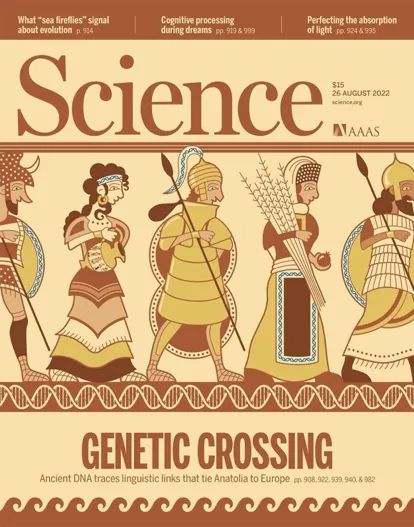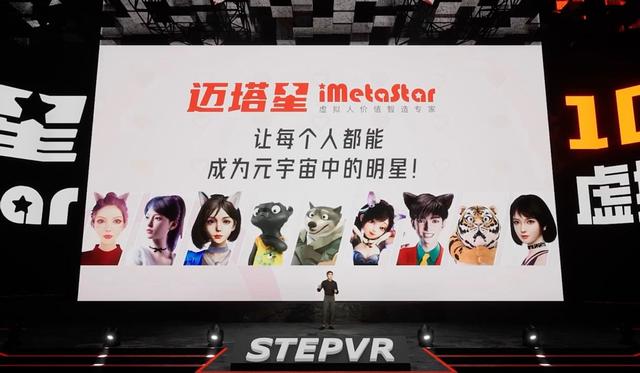"Science" (published 20220826) One -week thesis guide
Author:Scientific network Time:2022.08.28
Compilation | Weiyi
Science, 26 AUG 2022, VOL 377, Issue 6609
"Science" on August 26, 2022, Vol. 377, Issue 6609

Physics Physics
Tunable Light-Induced Dipole-Dipole Interaction BetWeen Optical Levity
Optical suspended nanoparticles can be adjusted light to the puppet pole
Author: Jakob Rieser, Mario A. Ciampini, Henning Rudolph, Nikolai Kiesel, Klaus Hornberger, Benjamin A. Stickler, et al.
Link:
https://www.science.org/doi/10.1126/sclence.abp9941
Summary:
Optical capture of nanoparticles has become a platform for complex and non -balance phenomenon. Similar to the atomic multi -body system, one of the key elements is the ability to accurately control the interaction between particles. However, the optical interaction that has been studied so far only provides limited adjustable conservative optical combination.
In this work, the research team uses the phase coherent of the light field interconnection of the driving light-induced puppet pole-puppet pole to couple two nanoparticles. In addition, they also effectively closed optical interactions and observed electrostatic coupling between charged particles.
The results of the research provide a way for the development of interactive nanoparticles with adjustable non -easy interaction, which fully programmed, which helps to explore the entanglement and topology in the suspended nanoparticles array.
Abstract:
Arrays of optically trapped nanoparticles have emerged as a platform for the study of complex nonequilibrium phenomena. Analogous to atomic many-body systems, one of the crucial ingredients is the ability to precisely control the interactions between particles. However, the optical interactions studied thus far only provide conservative optical binding forces of limited tunability. In this work, we exploit the phase coherence between the optical fields that drive the light-induced dipole-dipole interaction to couple two nanoparticles. In addition, we effectively switch off the optical interaction and observe electrostatic coupling between charged particles. Our results provide a route to developing fully programmable many-body systems of interacting nanoparticles with tunable nonreciprocal interactions, which are instrumental for exploring entanglement and topological phases in arrays of levitated nanoparticles.
Resonant metasurFaces for Generation Complex Quantum States
The resonance super surface of the complex quantum state
Author: Tomás SantiaGo-CRUZ, Sylvain d. Gennaro, Oleg Mitrofanov, Sadhvikas Addamane, John Reno, Igal Brener, Et Al. Link:
https://www.science.org/doi/10.1126/sclence.abq8684
Summary:
Quantum -state engineering is the cornerstone of quantum photon technology, which mainly depends on spontaneous parameter conversion and four -wave mixing. One or two pump photons spontaneously attenuated to photon pairs. Both non -linear effects need to participate in the constant momentum of photons, which seriously limits the universality of the quantum state. Non -linear super surface has sub -wave length and thickness, which relaxes this limit; when combined with resonance, non -linear super surfaces greatly expand the possibility of quantum -state engineering.
The research team produced entangled photons through spontaneous parameters with semiconductor super surfaces with continuous resonance high -quality factors and quasi -restraint. By enhanced the quantum vacuum field, the super surface enhances the launch of non -maternity entangled photons within the range of multiple narrow resonance bands and wide spectrum.
Among the same products at multiple wavelengths, a single resonance or multiple resonance can produce a multi -frequency sub -state, including cluster state. These features reveal the general source of the super surface as a complex state of quantum information.
Abstract:
Quantum state engineering, the cornerstone of quantum photonic technologies, mainly relies on spontaneous parametric downconversion and four-wave mixing, where one or two pump photons spontaneously decay into a photon pair. Both of these nonlinear effects require momentum conservation for the participating photons, which strongly limits the versatility of the resulting quantum states. Nonlinear metasurfaces have subwavelength thickness and allow the relaxation of this constraint; when combined with resonances, they greatly expand the possibilities of quantum state engineering. Here, we generated entangled photons via spontaneous parametric downconversion in semiconductor metasurfaces with high–quality factor, quasi-bound state in the continuum resonances. By enhancing the quantum vacuum field, our metasurfaces boost the emission of nondegenerate entangled photons within multiple narrow resonance bands and over a wide spectral range. A single resonance or several resonances in the same sample, pumped at multiple wavelengths, can generate multifrequency quantum states, including cluster states. These features reveal metasurfaces as versatile sources of complex states for quantum information.
Massively Degenerate Coheres Perfect ABSORBER for Arbitrary Wavefronts in front of any wave
Author: Yevgeny Slobodkin, Gil Weinberg, Helmut Hörner, Kevin Pichler, Stefan Rotter and Ori Katz
Link:
https://www.science.org/doi/10.1126/sclence.abq8103
Summary:
A key opinion of Feimukuko is that mature concepts such as laser can be operated reversely to achieve related perfect absorption (CPA). Although it is very attractive in concept, so far, such CPAs are limited to a single, reasonable waves or patterns.
The research team demonstrated how to overcome this limit by turning the short -tier laser through time. The laser is based on a unique cavity and it can imagine any incident light field.
Place a weak, critical coupling absorbor in this cavity, and before any incident wave (even a complex, dynamic changing scattered pattern) is absorbed at the process of large -scale parallel interference at the process of large -scale parallel interference. These characteristics are the application of light collection, energy transmission, light control and imaging.
Abstract:
One of the key insights of non-Hermitian photonics is that well-established concepts such as the laser can be operated in reverse to realize a coherent perfect absorber (CPA). Although conceptually appealing, such CPAs are limited so far to a single, judiciously shaped wavefront or mode. Here, we demonstrate how this limitation can be overcome by time-reversing a degenerate cavity laser based on a unique cavity that self-images any incident light field onto itself. Placing a weak, critically coupled absorber into this cavity, any incoming wavefront, even a complex and dynamically varying speckle pattern, is absorbed with close to perfect efficiency in a massively parallel interference process. These characteristics open up interesting new possibilities for applications in light harvesting, energy delivery, light control, and imaging.
Materials Science Materials Science
Growth Rules for Irregular Architect Materials with ProgramMable Properties
The growth law of irregular structural materials with programmable characteristics
Author: Ke Liu, Rachel Sun, and Chiara Darao
Link:
https://www.science.org/doi/10.1126/sclence.abn1459
Summary:
Biomatical materials show a micro -structure with irregular geometry and efficient function. Understanding the role of irregularities in determining the performance of the material, it provides a new way for the design of materials with excellent functions, such as defects, unsightly, enhanced impact absorption and stress redirection direction.
The research team used an increased procedure to reveal the structure-attribute relationship of basic and probability, which evoked the formation of random structures in the natural system. This virtual growth program has imposed a set of local rules for the basic elements of limited number. Starting from very limited initial resources, the materials produced have shown great changes in functional characteristics, which reflects the diversity of biological systems. The research team determined the basic rules for controlling mechanical properties. By a general, graphic -based irregular materials, the topology and geometric properties of the micro -structure were independently changed.
Abstract:
Biomaterials display microstructures that are geometrically irregular and functionally efficient. Understanding the role of irregularity in determining material properties offers a new path to engineer materials with superior functionalities, such as imperfection insensitivity, enhanced impact absorption, and stress redirection. We uncover fundamental, probabilistic structure –property relationships using a growth-inspired program that evokes the formation of stochastic architectures in natural systems. This virtual growth program imposes a set of local rules on a limited number of basic elements. It generates materials that exhibit a large variation in functional properties starting from very limited initial resources, which echoes the diversity of biological systems. We identify basic rules to control mechanical properties by independently varying the microstructure's topology and geometry in a general, graph-based representation of irregular materials.
StruCTURALLY InEgrated 3D Carbon Tube Grid – Based High-Performance Filter Capacitor
Structural integrated 3D carbon tube grid high -performance filter capacitor
Author: fangming han, qian, guowen meng, dou lin, gan Chen, shiping zhang, et al.
Link:
https://www.science.org/doi/10.1126/sclence.abh4380
Summary:
Filter capacitors play a key role in ensuring the quality and reliability of electrical and electronic equipment. Aluminum electrolytic capacitors are the most commonly used, but also the largest filter element, which limits the miniaturization of the device. The high -area and high volume electric container of the dual -electrical capacitor should make it an ideal miniaturized filter capacitor, but its slow frequency response hinder performance development.
The research team reported the development of interconnect and structured carbon pipe grid polar layer capacitors, with high -area capacitors and rapid frequency responses. These capacitors show the excellent line filtering and volume advantage of the 120 Hz voltage signal under the low -voltage signal of the 120 Hzhtz voltage signal under digital circuit, portable electronic equipment and electrical low -voltage operations.
These discoveries provide a reliable technical foundation for the development of dual -layer capacitors for the development of small -scale filters and power devices.
Abstract:
Filter capacitors play a critical role in ensuring the quality and reliability of electrical and electronic equipment. Aluminum electrolytic capacitors are the most commonly used but are the largest filtering components, limiting device miniaturization. The high areal and volumetric capacitance of electric double-layer capacitors should make them ideal miniaturized filter capacitors, but they are hindered by their slow frequency responses. We report the development of interconnected and structurally integrated carbon tube grid–based electric double-layer capacitors with high areal capacitance and rapid frequency response. These capacitors exhibit excellent line filtering of 120-hertz voltage signal and volumetric advantages under low-voltage operations for digital circuits, portable electronics, and electrical appliances. These findings provide a sound technological basis for developing electric double-layer capacitors for miniaturizing filter and power devices.编辑| 方圆
Capture | Guo Gang



- END -
Michael Star started the four major virtual star programs for the four major empowerment to help commercialization

The Yuan universe is the virtual person's Yuan universe and the Yuan universe of n...
New features on WeChat are connected to hot search!Netizen: More needed than these ...

August 23Multiple topics about WeChat new featuresRush to the hot searchTreating h...